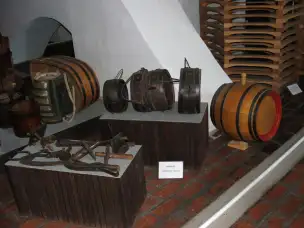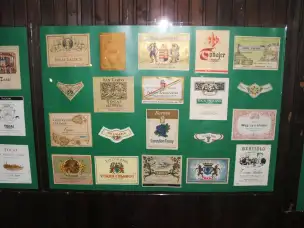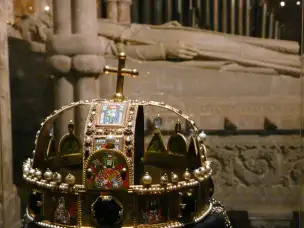Hungary is famous for its historic castles, thermal baths, distinctive cuisine, and wine. Who hasn’t heard of dishes like goulash, lángos, paprikash, or desserts such as Dobos torte and apple strudel?
Here are some of the top tourist attractions in Hungary:
- Budapest - The capital of Hungary, known for its stunning landmarks like the Parliament Building, Castle Hill, and Gellért Baths. It's also a great place to sample Hungarian cuisine and enjoy some shopping.
- Lake Balaton- The largest lake in Central Europe, drawing tourists in the summer with its beautiful beaches, fishing spots, and water sports.
- Eger - A charming town in northeastern Hungary, famous for its picturesque old town, castle, and vineyards.
- Hortobágy - The largest national park in Hungary, featuring breathtaking landscapes and unique bird species.
- Szeged - A city known for its vibrant cultural life, architectural heritage, and delicious cuisine.
- The Puszta - An iconic region of Hungary offering a true taste of Hungarian tradition – including horse shows, folk dancing, and traditional music.
- Tokaj - A wine region world-renowned for its Tokaji wines, where visitors can enjoy tastings and explore historic wine cellars.
Placek po więgiersku ...
For some time now, in towns frequently visited by Polish tourists, menus often feature a well-known Polish dish called placek po węgiersku (“Hungarian-style potato pancake”).
Although I hadn’t given it much thought before, seeing this dish in a restaurant somewhere—whether in Sóstófürdő, Tokaj, or Eger—gave me a slight shock. I realized that I had never, ever before seen placek po węgiersku actually served in Hungary…
I’ve seen lángos, kürtőskalács, carp soup, goulash as both soup and stew, sauces served with dumplings and groats. I’ve even seen potato pancakes served with sour cream—but the traditional Polish placek po węgiersku? Never.
There might be several reasons for this:
- This dish in Hungarian cuisine might be niche, forgotten, or strictly regional.
- Or it’s simply a Polish variation inspired by the cuisine of our “brother nation.”
Whatever the truth, nowadays no Polish tourist can complain that they haven’t tried an authentic placek po węgiersku while visiting Hungary.
Winemaking Tradition in Hungary
Hungary’s winemaking tradition is one of the oldest and most highly regarded in Central Europe. Thanks to its diverse climate and soils, Hungary offers excellent conditions for growing grapes, and viticulture there has been developing since Roman times.
Hungary is divided into 22 wine regions, but a few stand out as particularly famous:
- Tokaj – the most renowned wine region, famous for Tokaji Aszú, a sweet dessert wine made from grapes affected by noble rot (Botrytis cinerea). Tokaj is considered the world’s first officially classified wine region (1737). King Louis XIV called Tokaji Aszú “the wine of kings and the king of wines.”
- Eger – known for its red blend called Egri Bikavér (“Bull’s Blood”), which must include at least three different grape varieties, dominated by Kékfrankos. The region also produces white wines, such as Egri Csillag.
- Villány – a southern region considered the best for producing strong red wines (e.g., Cabernet Franc, Merlot, Kékfrankos). Often compared to Bordeaux.
- Szekszárd – similar to Villány, specializing in red wines, including a lighter style of Egri Bikavér compared to Eger.
Popular Grape Varieties
- White: Furmint, Hárslevelű, Olaszrizling, Juhfark, Kéknyelű
- Red: Kékfrankos (Blaufränkisch), Kadarka, Cabernet Franc, Merlot, Pinot Noir
Hungarian Coronation Ceremony
The coronation of Hungarian kings was one of the most important state rituals, solemn and strictly regulated. Since the 14th century, three main conditions had to be met for a coronation to be considered legitimate:
- The coronation had to take place in the cathedral of Székesfehérvár – the historic capital of Hungary and burial site of the country’s first king, Saint Stephen I. From the reign of Louis the Great (14th century), it became established that only coronations here guaranteed lawful rule.
- The king had to be crowned by the Archbishop of Esztergom – the Primate of Hungary and the highest church official in the kingdom, emphasizing the religious nature of royal power.
- The Holy Crown of Hungary (the Crown of Saint Stephen) had to be used – considered the symbol of the state’s sovereignty; without it, the coronation was invalid.
After Székesfehérvár was captured by the Turks in 1543, coronations were held in Bratislava. In the 18th century, they were moved to Buda and the Cathedral of Saint Matthias. The last coronation (Charles IV Habsburg in 1916) took place in Budapest, preserving traditional elements of the ceremony.













